Real estate investing is an interesting industry…
Some investors are all in, doing it as their full-time job. Others do a deal or two a year on the side. Some invest in marketing to generate leads, some rely solely on referrals. While there’s no right or wrong way, it’s always insightful to learn what others are doing and where they’re finding success.
Key Takeaways
- Most real estate investors do their own marketing, and they use an average of three strategies (mainly a website, social media, direct mail, and cold calling.
- Real estate investors spend anywhere from $2,000 annually to more than $100,000 annually on their marketing budgets! The median budget for real estate marketing is $12,000 annually.
- The average cost-per-click for a real estate ad was $25.20 in 2024.
Whether you’re brand new to real estate investing or a seasoned pro, this report gives you good insights into what your peers are up to, industry standards, and how you stack up.
Table of Contents
- Who are Real Estate Investors?
- How Much Time Do Investors Spend Marketing?
- Where Should Investors Focus Their Marketing?
- Marketing Budgets in 2025
- What to Expect from PPC & Paid Ads
- Your 2025 Playbook for More Deals
Who are real estate investors?
To help shine some light on the state of real estate investment marketing, we surveyed 90 REI professionals — both Carrot members and non-Carrot members — to learn what marketing strategies they’re using, what their most effective lead generation channels are, their annual marketing budget, and how 2025 will be different from 2024. Investors of all experience levels and a variety of real estate investment specialties responded, providing valuable insights no matter where you are on your REI journey.


Real estate investors mostly handle their own marketing…
For real estate investors, marketing is still very much a DIY endeavor. Fifty-seven percent of survey respondents report handling all marketing activities themselves, while 31% have some outside help. Only 12% of investors have agencies or freelancers handle all their marketing.
Marketing activities make up only a fraction of a busy investor’s schedule though. More than 85% of survey respondents spend less than 10 hours per week on marketing activities, with nearly a quarter of respondents dedicating less than one hour per week. Things may change this year though, as an impressive 71% of investors plan on increasing their marketing time. Only 8% plan on decreasing the amount of time spent on marketing in 2025.
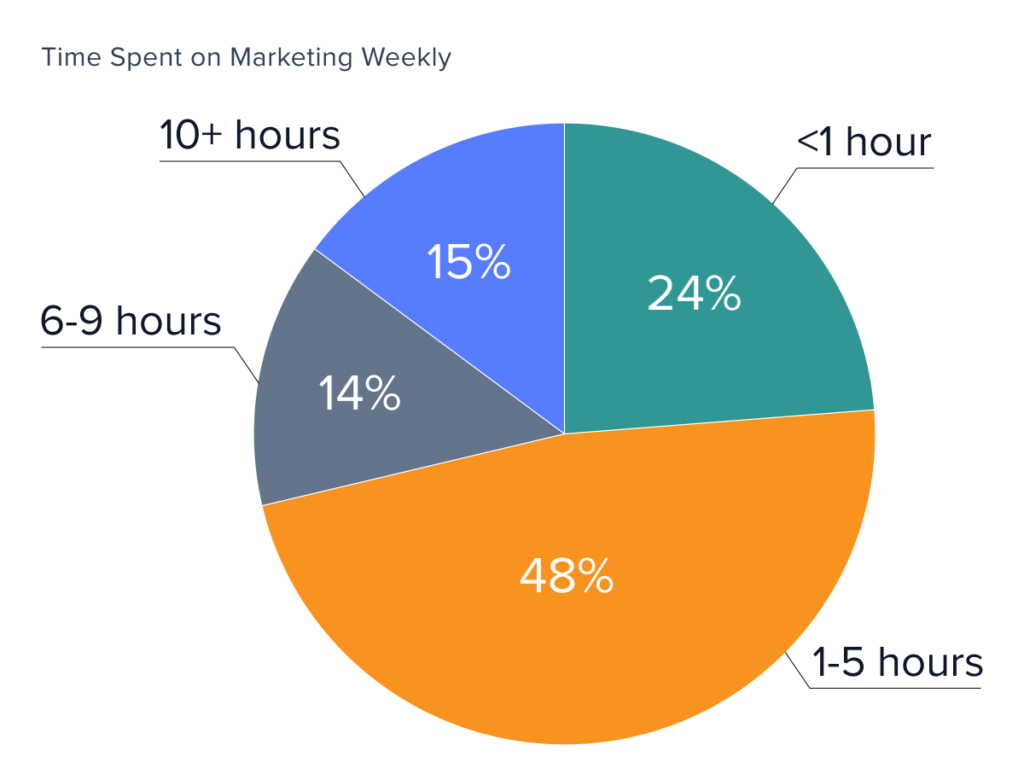
Where should investors focus their marketing?
With so little time dedicated to marketing, it’s important for investors to find strategies and tools that work well and fill pipelines. With a seemingly endless number of marketing solutions available, deciding which to focus on can be difficult. Most investors report using only a few solutions, with nearly 50% of investors using two to three marketing services. The most common are a CRM and website. Investing in a real estate CRM is a smart move in 2025 to keep all your leads (online and offline) organized and streamline follow-up. Investors still relying on spreadsheets for lead management risk falling behind their peers.

Marketing tools support a range of lead generation strategies. The average investor works with three strategies to actively generate leads, but some use upwards of eight. Websites and social media are the most common, followed by direct mail, cold calling, and SEO, indicating that both online and offline lead generation tactics still work a successful investment business. The “tried and true” lead generation approaches aren’t fading, but successful investors are also expanding online to ensure they capture the maximum number of leads.
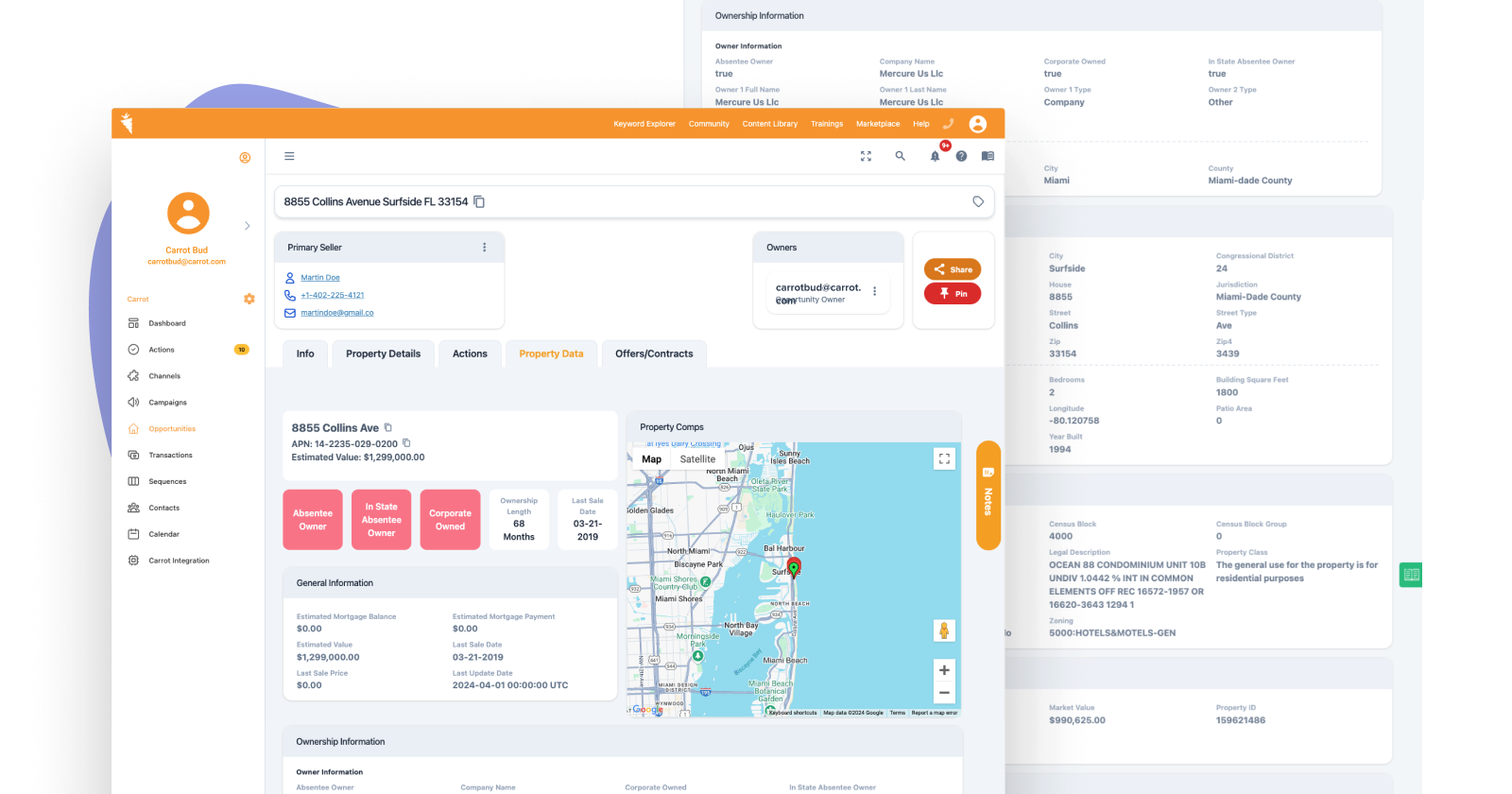
Carrot CRM Never Lose Track of a Deal
Get Carrot CRM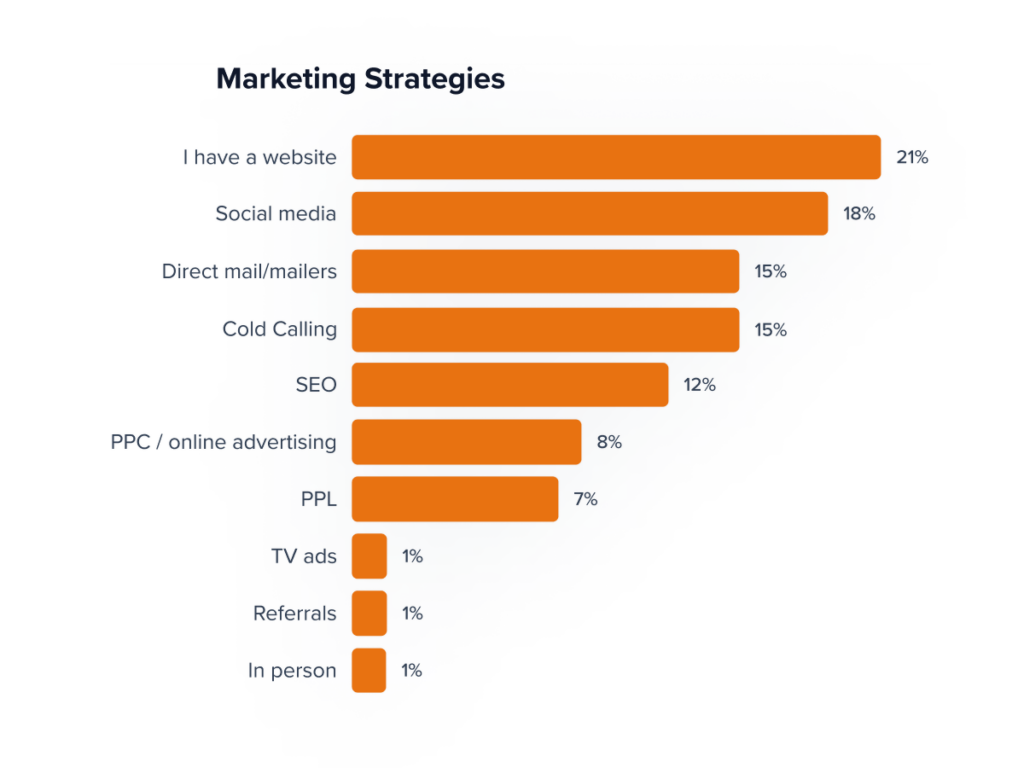
While referrals and networking are the No. 1 source of leads for many investors, social media and direct mail are also top lead drivers. When planning your marketing strategy in 2025, a healthy mix of networking plus online and offline marketing has the best chance of driving success. Channels like direct mail & paid social media ads still work in 2025, but judging by the numbers, there’s low-hanging fruit in SEO.
Note: The important part is to treat your website as the “hub” of your marketing — funnel your direct mail, social, PPC, etc., to your website so you can capture those leads more easily!
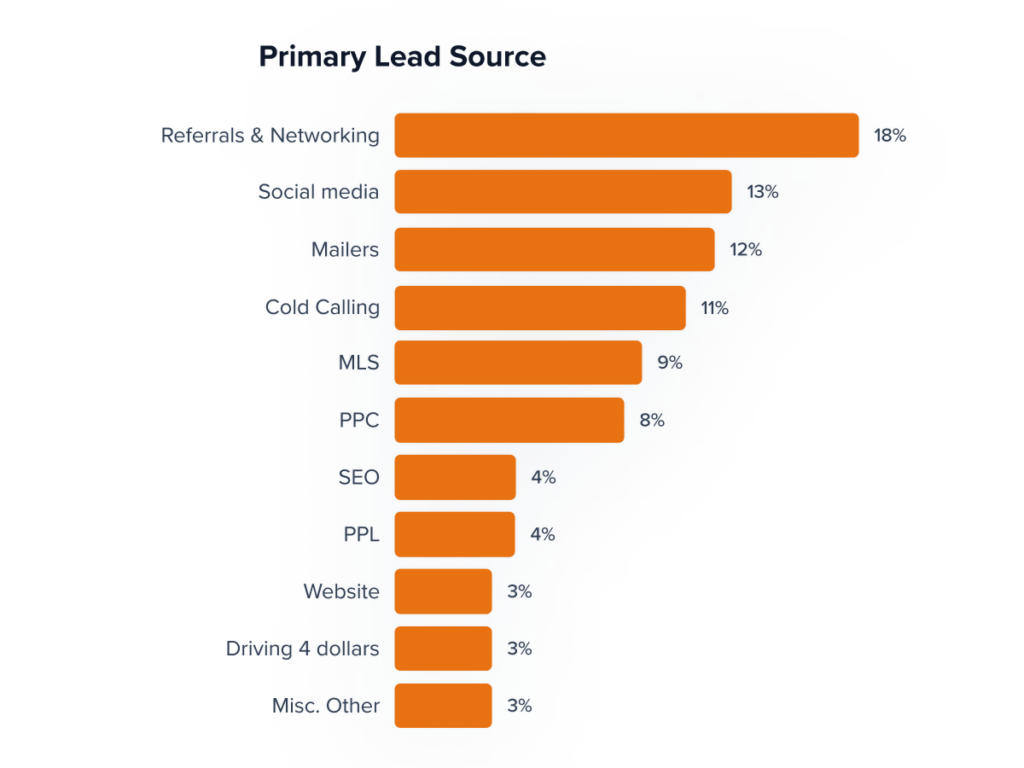
To capture more leads in 2025, 65% of investors plan on adding additional marketing strategies. Only 3% intend to decrease their number of outreach channels. For those interested in increasing marketing, SEO, paid advertising, and pay-per-lead solutions are popular and effective for many successful investors. Having a high-converting website is also a key piece of the mix, as you need something to optimize for SEO and somewhere to point paid advertising. It’s also good practice to add a website to any offline outreach so potential leads can research you and verify your authenticity before deciding to reach out. When was the last time you worked with a company without checking them out online first?
Marketing budgets vary wildly in 2025
How much real estate investors spend on marketing annually ranges from less than $1000 for the entire year up into six figure sums. The median marketing budget amongst survey respondents is $12,000 annually, though investors who run online advertising likely have higher budgets. Eight respondents plan on spending less than $1000 on marketing this year, while 12 will spend more than $100,000. Three respondents report having a $500,000 annual marketing budget!
And those budgets are only growing for many. Sixty percent of survey respondents are increasing their marketing budget in 2025, while 28% are keeping their budget the same.
How much investors spend corresponds somewhat to how long they’ve been in real estate. Newer investors naturally have a lower budget as they work to close their first few deals. Annual marketing budgets increase as investors become more seasoned, but stay relatively flat for investors with 1-9 years of experience.

Interestingly, there isn’t a consensus on the primary lead source among the top spenders, nor on their most effective marketing strategy. While investors who spend more than $100,000 do utilize more marketing strategies (an average of five instead of three), some top spenders only rely on paid ads or cold calling. The most commonly used marketing strategies for this high-budget cohort are websites and direct mail.
Meanwhile, those with the smallest annual budgets ($2,500 or less) rely on an average of two marketing strategies, mainly a website, social media, or cold calling. Their primary lead sources are more manual and low-cost options, such as referrals and social media.
What to expect from PPC & paid advertising
While only 8% of survey respondents invest in online advertising, it can be a lucrative lead source. To help investors who already run ads or those interested in expanding to PPC in 2025 understand what the investment looks like and what to expect, we asked our friends at Motivated Leads, a digital marketing agency specializing in online advertising for real estate investors, to share some insights.
How much to spend on ads
Last year, the median spend on Google Ads for Motivated Leads clients was $3,000 to $5,000 a month and the average cost-per-click (CPC) was $25.20. Investors running regular Google ads saw an average click-thru rate (CTR) around 5%, leading to an average cost-per-lead (CPL) of $250 or lower.
Ads targeting Illinois, Kentucky, and Delaware had the highest conversion rates, with CPLs dancing around the national average:
- Illinois: $207.18
- Kentucky: $241.03
- Delaware: $279.11
However, things changed slightly for investors who used Google’s Performance Max advertising option. Performance Max can lower your CPC and CPL, however, it may result in less qualified leads without proper campaign optimization.

Performance Max is harder to run and has broader targeting, leaving the algorithm to place ads. With this approach, your ads may appear on display, search, YouTube, Gmail, or other places and may appear to web surfers outside of your local area. This broader approach can impact lead quality because you have less control over who you’re targeting ads toward.
Google’s “regular” search advertising gives you more control over who you’re targeting and where your ads appear, allowing you to specifically target searchers who are more likely to become leads. The cost per lead is higher in this case because you’re focusing on more qualified leads. Investors with smaller advertising budgets should focus on Google search ads and targeting the right keywords to get the most value from their investments.
The most effective advertising
Focusing your ad budget on the right keywords and running ads at the right time can make your advertising dollars go further.
In 2024, the highest-converting keyword themes for real estate investors were:
- Sell my house fast
- We buy houses
- Home buyer
Localizing your target markets and adding local terms to your keywords helps focus who sees your ads, improving lead quality. When adding a location name to keywords remember that your city name may not be unique. Are you trying to reach buyers/sellers in Portland, OR or Portland, ME? Make sure your ad account is properly set up to target the right area and that the landing pages your ads point to include the city AND state.
Once your ads are set up, give them a better chance of being seen by running them at the best times. In 2024, online ads converted best on Monday, Tuesday, and Wednesday between 1pm and 5pm local time.
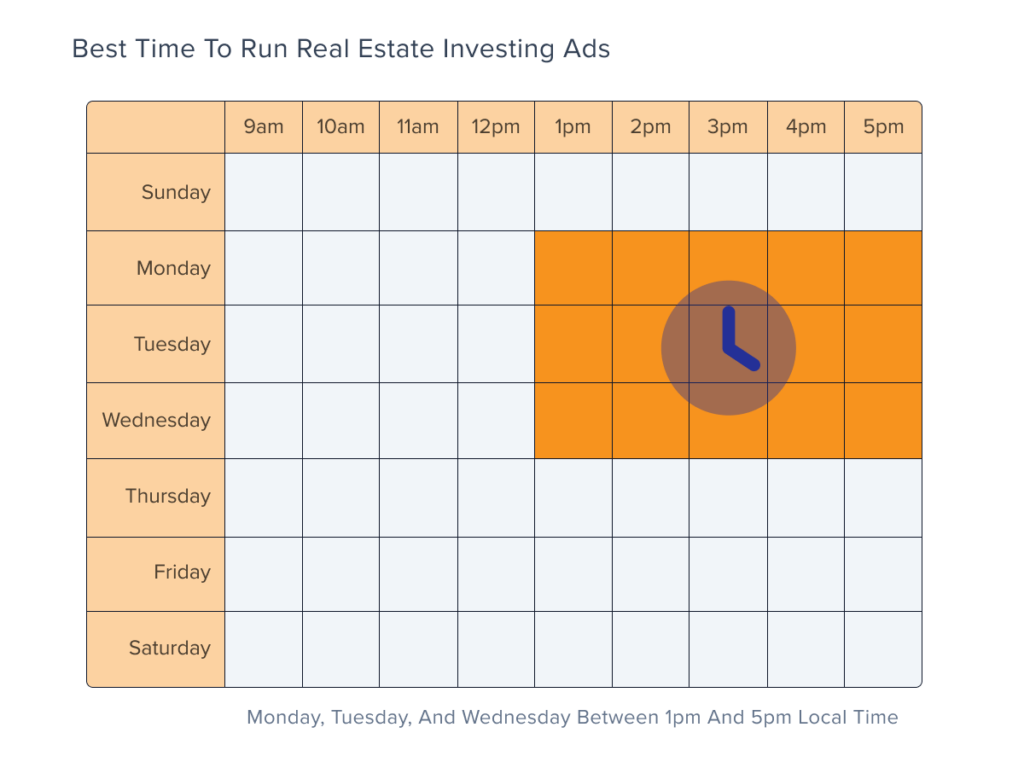
Google Ad changes in 2025
Understanding online advertising trends from the past 12 months can help you plan your strategy for this year, but it’s important to remember that the world of online advertising can change quickly. Google algorithm updates and changes to the Google Ads platform can happen at any time and may impact how ads are set up and their performance.
For example, Google Ads performance and strategy underwent notable changes between 2023 and 2024. The cost-per-click increased by 36%, while the click-through rate improved by 17%. Despite these shifts, the cost per lead remained virtually unchanged, with only a slight variation according to Motivated Leads.
A major strategic difference lies in keyword usage. In 2023, marketers focused on phrase and exact match keywords. However, in 2024, Google’s updated keyword match type (leveraging signals and a searcher’s intent) prompted a shift toward broader but still highly relevant keyword themes.
If you run your own ads, pay attention to any shifts or noticeable updates to make sure you maintain optimal ad performance. If you’re not comfortable running your own ads (or simply don’t want to become an online marketing expert), consider working with an advertising agency like Motivated Leads. (Need help finding a PPC service? Check out the Carrot Marketplace.)
Your 2025 playbook for more deals & more revenue
This survey proves there isn’t one right way to generate real estate investment leads. Find what works for you and your budget. If you’ve been avoiding certain marketing strategies, 2025 may be a good time to expand your reach and try something new. If you don’t have a website yet, this is the year to get online. A strong website serves as both a lead generation machine and a central hub for the rest of your online and offline marketing.
Need help knowing where to focus this year? Here are some tips from Carrot CEO Trevor Mauch:
🔥 1. Invest in Your Online Presence – Your website isn’t just a “nice-to-have.” It’s your 24/7 conversion hub. Make sure it’s optimized, fast, mobile-friendly, and ranking in Google. If you’re on Carrot, you’re already ahead of the game. If you’re not — it may be time to consider a switch.
🔥 2. Optimize for Conversions – Most investors waste traffic. Don’t be one of them. Your website should be built to convert visitors into leads at the highest possible rate.
🔥 3. Get Your Follow-Up Dialed In – Leads are ready to act NOW. If you’re not following up fast, you’re leaving money on the table. Carrot CRM helps you track, nurture, and close leads effortlessly.
🔥 4. Take Action — Before Your Competition Does – 71% of investors are increasing their marketing in 2025. If you’re not doubling down, you may find yourself struggling to get the leads and deals you were used to getting last year.
Take inspiration from these findings and double down on your marketing to make 2025 the biggest year yet!